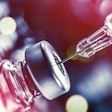
Researchers have evaluated the agreement and deviations between the prevalence of COVID-19 test results obtained by traditional surveillance and self-reported smartphone apps in the U.S. and Germany.
The results, published January 31 in the journal JAMA Network Open, illuminate the shifts in diagnostic COVID-19 testing from the initial polymerase chain reaction (PCR) tests in healthcare settings toward more recent rapid antigen home testing.
Since the beginning of the COVID-19 pandemic, official case numbers, typically collected in healthcare settings, have been a guideline for public health policies. As rapid home testing became increasingly available, the many people self-diagnosing SARS-CoV-2 infections at home were not typically counted in official statistics.
The U.S.-based Digital Engagement and Tracking for Early Control and Treatment (DETECT) study and the Germany-based Corona-Datenspende (CDA) both allowed participants to complete an eConsent, answer COVID-19 symptom, testing, and vaccination surveys, and donate sensor data through a smartphone app. Researchers compared the seven-day rolling mean values of self-reported COVID-19 positive swab test results in both datasets during designated observation periods, together with respective seven-day rolling averages of case counts and incidences.
During the observation period for DETECT (March 2020 to July 2022), 40,646 enrolled participants self-reported 35,077 COVID-19 test results. During the observation period for CDA (January 2022 to July 2022), 24,017 enrolled participants self-reported 184,220 COVID-19 test results. Both studies had a similar mean participant age of 49.4 years in DETECT and 48.1 years in CDA, but DETECT had a higher proportion of female participants (61.1%) compared with CDA (35.9%).
In both studies, self-reported cases correlated well with official numbers, and the onsets and turning points of pandemic waves were well-aligned. However, stagnation of self-reported cases occurred in the U.S. in October 2021 and in Germany in February 2022 when case numbers were rising. Likewise, self-reported positive tests increased in April 2022 (U.S.) and June 2022 (Germany) compared with official case numbers.
Unless people follow up on a positive home test with one taken in a healthcare setting, the data are likely not captured by established surveillance systems, partially explaining deviations between self-reports and official statistics. Therefore, researchers say that digital tools such as DETECT and CDA can potentially provide real-time complementary data to further inform policy.
Both studies’ limitations included the exclusion of children and adolescents, and strong underrepresentation of older people. Further, participants might be more health-conscious and risk-averse than the general population, perhaps explaining the large increase in self-reported cases in later phases when infections became difficult to avoid. Finally, both studies show declining participation over time, which might lead to erroneous estimations of COVID-19 prevalence from self-reported data for recent waves.
Ultimately, antigen tests are less sensitive compared with PCR tests in early and late stages of infection—a factor to be considered before operationalizing future crowdsourced systems. DETECT and CDA have some unique advantages, including scalability, location independence, minimal participant time and effort, adaptability, and low cost, and the ability to complement clinical in-person surveillance by tracking COVID-19 activity when cases diagnosed at home evade capture by public health counts.



















